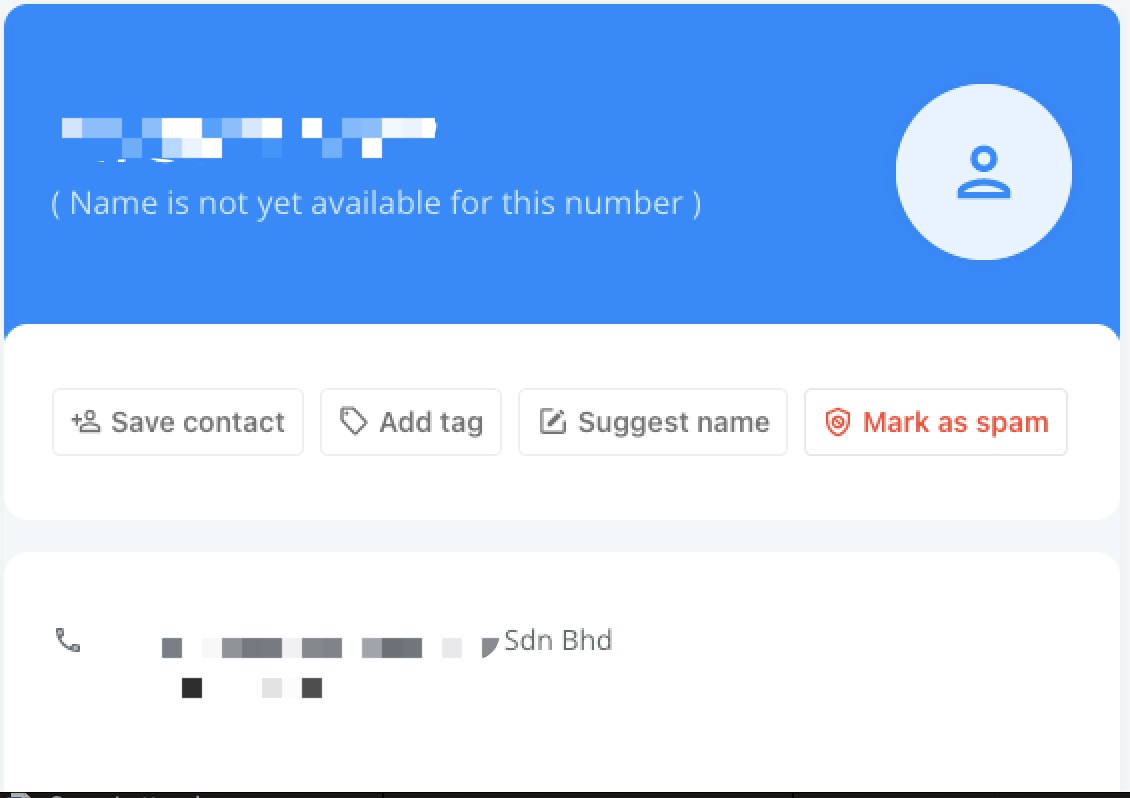This Vulcan Post article is about a writer’s experience participating in a scam that promised to pay for subscribing to YouTube channels. The writer received a spam message from a fake HR recruiter who offered the writer a part-time job with a Digital Marketing company that claimed to help YouTubers and businesses grow their followings. The writer agreed to do some test tasks, which involved subscribing to two YouTube channels and sending screenshots as proof. The writer received RM30 for completing the tasks and was then added to a Telegram group with other members who were given more tasks to subscribe to different YouTube channels. The writer was told she could earn up to RM2,000 per day by doing merchant tasks.
This scam was actually a scheme to get the writer to transfer money to a bank account in exchange for more rewards. Many of the messages in the group were from people (or bots) who claimed to have successfully completed the merchant tasks and received more money.
Communicate to Persuade
In the Art of Rhetoric, Aristotle, the ancient Greek philosopher describes the elements of communication. Aristotle argues that communication is the process of using language to persuade an audience to believe or do something. He also argues that there are three main types of persuasion:
Ethos is persuasion based on the character of the speaker. Pathos is persuasion based on the emotions of the audience. Logos is persuasion based on logic and reason.
The Telegram scam is an example of how communication can be used for persuasive scamming.
-
Ethos: The scammer claims to be from a legitimate digital marketing company. This gives the writer the impression that the scammer is trustworthy and that the job offer is legitimate.
-
Pathos: The scammer praises the writer for a good job done. This makes the writer feel more positive about the scammer and would probably be more likely to agree to the tasks. The early reward reinforces the writer’s belief and trust that the job is legitimate and trustworthy. At one point, the writer even entertained the thought that it could be legit.
-
Logos: The scammer uses logic and reason to persuade participants that the scam is a good opportunity. The scammers convinces participants that they can make a lot of money by taking up merchant tasks.
One of Aristotle’s many conclusions pointed that communication is persuasion and persuasion is communication. We can take this relationship further to say that everything we do or say communicates a message. The message may be through verbal communication, nonverbal communication, or meta-communication.
In the context of this article and the perspective of scamming, we take the information that:
Communication is persuasion, and persuasion is communication
Substituting, we have:
Persuasion is scamming, and scamming is persuasion
We then have:
Communication is scamming, and scamming is communication
In this way, communication and scamming are two sides of the same coin. Communication is used to persuade, and scamming is a form of persuasion that is used to exploit others. It is important to be aware of this so that we can protect ourselves from being scammed.
5 Stages of Persuasion
In this context, communication is used to persuade someone to take action that is not in their best interest. The scammer uses a variety of tactics to persuade the victim, including creating a sense of urgency, appealing to the victim's emotions, and using false information. The victim is then persuaded to take action, such as providing personal information or sending money, that benefits the scammer.
For example:
| Stages | Description |
|---|---|
| Unawareness | The scammer first provided the knowledge to the worker who is in a state on unawareness. |
| Awareness | Through the tactic of reciprocity, the scammer reached an agreement with the worker by offering the writer a job that paid RM2,000 a day. This made the worker feel like they are in a mutual reciprocal pact, which moved the worker into the stage of awareness. |
| Comprehension | The scammer then used the tactic of scarcity by making it seem like the job opportunity was limited. This created a sense of urgency, which moved the worker into the stage of comprehension. |
| Conviction | The scammer then used the tactic of urgency by saying that the worker needed to start working immediately. This deprives the worker sufficient time to think about the offer, and the worker needed to make a decision right away, which moved the worker into the stage of conviction. |
| Action | The scammer used the tactic of authority by claiming to be from a legitimate company. This gave the the impression that the scammer was trustworthy and that the job offer was legitimate, which plausibly moved the worker into the stage of action. |
How can intelligence assist us?
How can we fact check?
Some possibilities:
- Reverse image search: Google Images search results didn’t give me anything close. I tried using YandexTinEye and AI-Image-Detector.
** These images were obtained from the original post’s website and cropped for submission to Yandex, TinEye and the AI-Image Detector. All returned 0 match.
Demonstration purpose only. All images were distorted for privacy purpose
Update: These pictures have since been removed from the original post where they first appeared.

Of the 2 images uploaded, the AI image detector returned with the percentage of them being artificial images.

- Phone number lookup: The article mentioned that the writer received a spam message from a fake HR recruiter who offered him the job.
For demonstration purpose, I used Truecaller to search for a phone number that had creached out with job opportunities.
Truecaller's support extends to Malaysia. The result returned was a "Name is not yet available for this number". This means that the number could be currently unregistered. However, I was able to know the provider of this number, a certain Telco in Malaysia.

-
Link analysis: The article mentions that the writer was given a referral code and a link to join the Telegram group with the username Miya_99. I do not have the link hence I am unable to run a scan to analyse the link. If the link had a low trust score and was flagged as potentially malicious. This means that the link was used to hide the real destination and to avoid detection by security tools.
-
Social network analysis: The article mentioned that the writer was added to a Telegram group with hundreds of other members who were given tasks to subscribe to YouTube channels. One can analyze this group to determine how many of the members were using fake or duplicate accounts with similar names, photos, and messages and whether these accounts were connected to other groups and channels that promoted similar scams. If so, this could mean that the group was populated by bots and collaborators who were working together to create a sense of social proof and urgency.
-
Source verification: The article mentioned that the scammers and their bots sent screenshots of transfers made to different bank accounts as proof of their rewards. A check on the screenshots for inconsistencies and anomalies, such as mismatched fonts, colours, dates etc. to see if some of the screenshots were taken from other sources or edited.